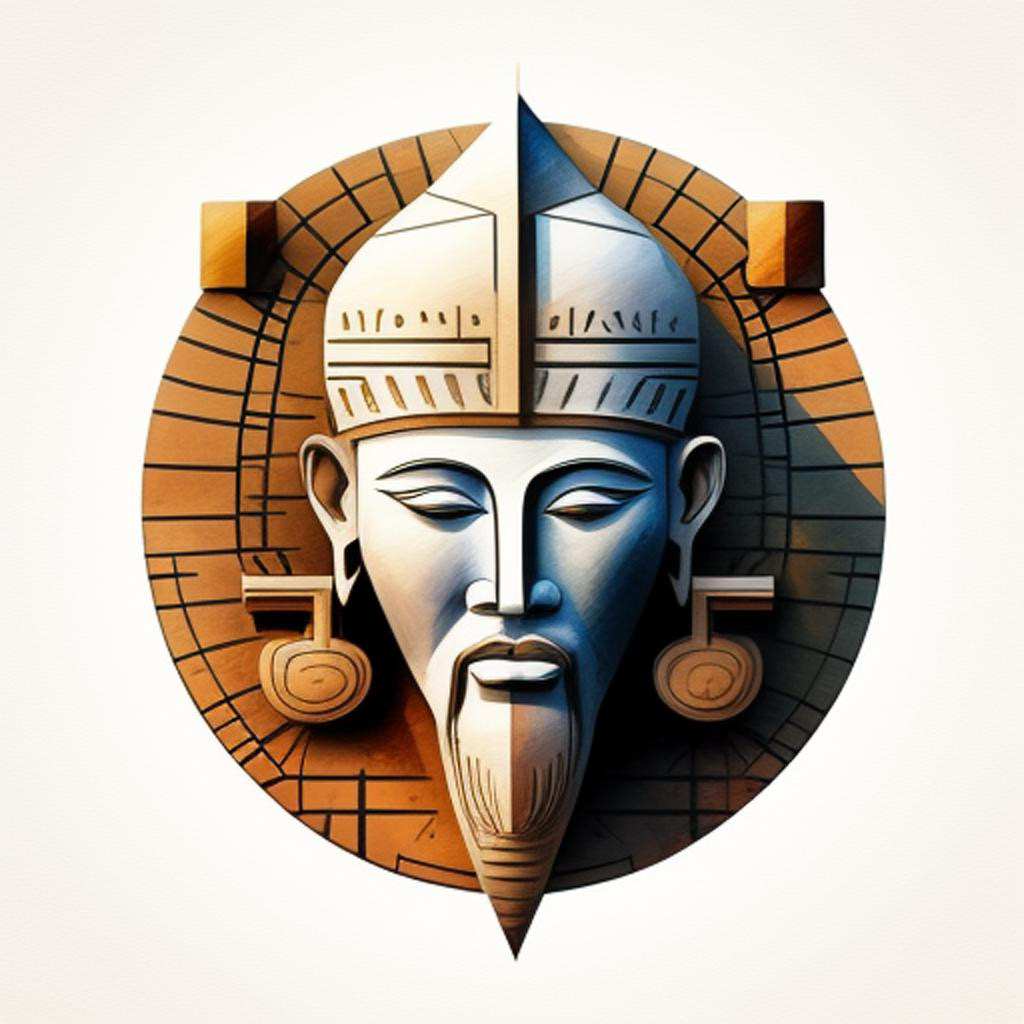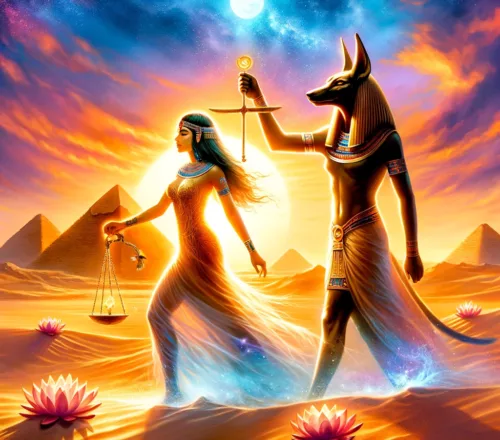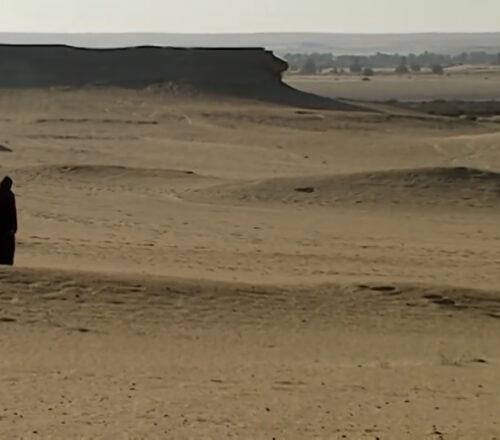
Table of Contents
The Sumerian civilization
The Sumerian civilization is an ancient civilization that existed in what is now known as modern-day Iraq. Although much of the civilization’s history has been lost to time, recent archaeological discoveries have shed new light on the Sumerian people and their way of life.
The Sumerian civilization is believed to have existed from around 4000 BCE to 2000 BCE. During this time, the Sumerians developed a complex system of writing, mathematics, and architecture. They built great cities and created an empire that stretched across much of Mesopotamia.
One of the most important recent discoveries about the Sumerian civilization is the fact that they had a system of writing that was far more advanced than previously thought. The Sumerian writing system was based on cuneiform, a system of writing that used wedged-shaped marks made on clay tablets. These tablets were used to record everything from business transactions to epic poems.
Recent discoveries have shown that the Sumerians used their writing system to record not only practical information but also their myths, religious beliefs, and history. The Sumerian creation myth, which tells the story of the god Marduk’s victory over the chaos monster Tiamat, is one of the earliest known creation myths in human history.
In addition to their writing system, the Sumerians were also skilled architects. They built great cities with massive temples, ziggurats, and palaces. One of the most impressive Sumerian cities was Ur, which was home to the famous Ziggurat of Ur. This massive temple towered over the city and was dedicated to the moon god Nanna.
Recent excavations of the Ziggurat of Ur have revealed a great deal about Sumerian religion and architecture. The temple was built in stages, with each stage representing a different phase of the moon. The uppermost stage, which was dedicated to Nanna, was made of baked bricks and covered in a layer of bitumen to protect it from the elements.
Another important aspect of Sumerian civilization was their system of mathematics. The Sumerians developed a sexagesimal system of counting, which was based on the number 60. This system was used to calculate everything from the length of a day to the circumference of a circle.
Recent discoveries have shown that the Sumerians also had a complex system of weights and measures. They used a system of weights that was based on units of 60, which made it easy to perform calculations without the need for fractions. The Sumerians also had a system of measurement that was based on the length of the human body, with the cubit being the standard unit of measurement.
Despite their impressive achievements, the Sumerian civilization eventually fell to the Akkadian Empire around 2000 BCE. The reasons for the Sumerian’s decline are not entirely clear, but it is believed that a combination of internal strife, climate change, and external pressures from neighboring empires all played a role.
Recent archaeological discoveries have shed new light on the Sumerian civilization and their achievements. From their advanced system of writing to their impressive architecture and mathematics, the Sumerians were a highly advanced civilization that left a lasting impact on human history. While much of their history has been lost to time, these recent discoveries give us a glimpse into the lives and achievements of this ancient people.
Clay tablets have proven to be remarkably durable
Clay tablets have proven to be remarkably durable and have survived thousands of years, providing valuable insights into ancient civilizations. The reason for their longevity lies in the way that they were produced and the environment in which they were stored.
Clay tablets were created by shaping wet clay into a flat surface, which was then inscribed with a stylus. The inscriptions were then allowed to dry, and once the clay had hardened, it became a permanent record of the information that had been recorded.
Because clay is a naturally occurring material and is abundant in many regions, it was widely used by ancient civilizations as a medium for writing. The clay used by the Sumerians, for example, was sourced from the banks of the Tigris and Euphrates rivers.
Once inscribed, the clay tablets were often stored in dry, cool environments, such as in temple or palace archives. This protected them from exposure to moisture and sunlight, which can cause degradation and decay over time. Additionally, the dry climate of the region helped to preserve the clay tablets by preventing the growth of mold or fungi.
Over time, many of these clay tablets were buried or lost, and some were even deliberately destroyed. However, those that have survived to the present day have done so because they were buried in layers of sediment or ash, which helped to protect them from the elements and prevent them from being damaged by human activity.
Finally, it is important to note that not all clay tablets have survived intact. Some have been damaged or broken over time, and others have deteriorated due to exposure to moisture or other environmental factors. However, the ones that have survived provide a valuable glimpse into the past and have contributed significantly to our understanding of ancient civilizations.
The myths, religious beliefs, and history of the Sumerians
Myths and Religious Beliefs
The Sumerian civilization had a rich mythology, and their religious beliefs played a significant role in their daily lives. They believed in a pantheon of gods and goddesses who controlled various aspects of the world. Some of the most important Sumerian gods and goddesses include Anu, Enlil, Enki, Nanna, and Inanna.
The Sumerians believed that the gods created humans to serve them and that they had a duty to appease the gods through offerings and sacrifices. Temples were built throughout Sumer to honor the gods, and priests played an important role in maintaining the relationship between the gods and the people.
One of the most famous Sumerian myths is the Enuma Elish, which tells the story of the creation of the world and the struggle between the gods Marduk and Tiamat. In this myth, Tiamat represents chaos and destruction, while Marduk represents order and civilization. Marduk ultimately triumphs over Tiamat, creating the world from her body.
Another important Sumerian myth is the story of Gilgamesh, a legendary king who sought immortality after the death of his friend Enkidu. The story of Gilgamesh is one of the earliest known examples of epic poetry and has had a lasting influence on literature and culture.
History
The Sumerian civilization was one of the earliest civilizations in human history and developed in the region known as Mesopotamia, which is now modern-day Iraq. The Sumerians developed a complex society that included cities, trade networks, and a system of writing.
They were known for their advanced agriculture techniques, including the use of irrigation to grow crops in arid regions. They also developed a sophisticated system of mathematics, including the use of a base-60 numerical system that is still used today to measure time and angles.
The Sumerians were ruled by kings, who were seen as intermediaries between the gods and the people. The most famous Sumerian ruler was Sargon of Akkad, who founded the Akkadian Empire and united much of Mesopotamia under his rule.
The decline of the Sumerian civilization is still not entirely understood, but it is believed that a combination of factors, including environmental changes, internal conflict, and external pressures from neighboring empires, all contributed to their downfall. The Akkadian Empire eventually conquered Sumer, and their culture and achievements were absorbed into the broader culture of Mesopotamia.
In conclusion, the Sumerian civilization was a highly advanced civilization that made significant contributions to human history. Their mythology, religious beliefs, and history offer valuable insights into the development of human culture and society, and their legacy continues to be felt in the modern world.
Gilgamesh legendary king from ancient Mesopotamia
Gilgamesh is a legendary king from ancient Mesopotamia and the protagonist of the Epic of Gilgamesh, one of the earliest known works of literature in human history. The epic tells the story of Gilgamesh’s quest for immortality, as well as his friendship with Enkidu and his battles with various monsters and gods.
The Epic of Gilgamesh was written in cuneiform on clay tablets in the Sumerian language, and it is believed to have been composed around 2100 BCE. The epic consists of 12 tablets, each telling a different part of Gilgamesh’s story.
Gilgamesh was said to have been the king of the city of Uruk, which was one of the largest and most powerful cities in Mesopotamia at the time. According to the epic, Gilgamesh was a tyrannical king who oppressed his people, and they prayed to the gods to send someone to stop him.
In response, the gods created Enkidu, a wild man who lived in the forest and had the strength of many men. When Gilgamesh heard of Enkidu, he sent a prostitute named Shamhat to seduce him and bring him to civilization. Enkidu and Gilgamesh eventually became friends and went on many adventures together.
One of the most famous adventures in the epic is Gilgamesh’s battle with the monster Humbaba, who guarded the cedar forest. Gilgamesh and Enkidu were able to defeat Humbaba with the help of the sun god Shamash.
Another important part of the epic is Gilgamesh’s quest for immortality. After Enkidu dies, Gilgamesh becomes obsessed with the idea of living forever and sets out on a journey to find the secret of eternal life. He travels to the ends of the earth and meets the immortal Utnapishtim, who tells him the story of the great flood and how he was granted eternal life by the gods.
Despite his efforts, Gilgamesh is unable to obtain immortality and returns to Uruk, where he realizes that his legacy will live on through the great city he built and the stories that are told about him.
The Epic of Gilgamesh is an important work of literature and has had a lasting influence on culture and society. It explores themes of friendship, mortality, and the search for meaning in life, and it has been adapted into many different forms, including plays, operas, and films.
In conclusion, Gilgamesh is a legendary king from ancient Mesopotamia and the protagonist of the Epic of Gilgamesh, one of the earliest known works of literature in human history. His story has inspired countless artists, writers, and thinkers throughout the ages, and it continues to captivate and inspire people today.
Uruk: The City of Great Ziggurat
Uruk was one of the most important cities in ancient Mesopotamia and was located in what is now modern-day Iraq. The city was first settled around 4000 BCE and was one of the earliest urban centers in human history. It was the center of the Sumerian civilization and is believed to have been home to around 50,000 people at its peak.
One of the most impressive structures in Uruk was the Great Ziggurat, a massive stepped pyramid that was dedicated to the goddess Inanna. The ziggurat was built in several stages and was one of the largest and most complex structures of its time.
The ziggurat was constructed of mud bricks, which were made by mixing mud with straw and drying it in the sun. The bricks were then stacked on top of each other to form a stepped pyramid, with each level slightly smaller than the one below it. The ziggurat was then covered in a layer of plaster and painted in bright colors, making it an impressive sight to behold.
The Great Ziggurat of Uruk was a place of worship and pilgrimage, and it played an important role in the religious and cultural life of the city. It was believed to be a place where the goddess Inanna could communicate with the people of Uruk and was the site of many religious ceremonies and rituals.
In addition to the Great Ziggurat, Uruk was also home to many other impressive structures, including palaces, temples, and fortifications. The city was surrounded by a massive wall that was more than 8 miles long and was fortified with towers and gates.
Uruk was also a center of trade and commerce, and it was home to many skilled artisans and craftsmen. The city was famous for its textiles, jewelry, and metalwork, and its goods were traded throughout the region.
Despite its importance, Uruk eventually declined and was abandoned around 300 BCE. The city was rediscovered in the 19th century by archaeologists, who uncovered many of its impressive structures, including the Great Ziggurat. Today, the site of Uruk is a UNESCO World Heritage Site and is visited by tourists from around the world.
In conclusion, the city of Uruk was one of the most important cities in ancient Mesopotamia and was home to many impressive structures, including the Great Ziggurat. The ziggurat was a place of worship and pilgrimage and played an important role in the religious and cultural life of the city. Despite its eventual decline, Uruk’s legacy lives on and continues to inspire and captivate people today.
Utnapishtim: The Immortal Hero of the Epic of Gilgamesh
Utnapishtim is a legendary figure from the Epic of Gilgamesh, one of the earliest known works of literature in human history. He is believed to be the only mortal to have been granted eternal life by the gods, and his story has captivated and inspired people for thousands of years.
According to the epic, Utnapishtim was a king who lived in the city of Shuruppak before the great flood that was sent by the gods to destroy humanity. The god Ea warned Utnapishtim of the coming flood and instructed him to build a great ship and fill it with animals and his family.
Utnapishtim followed Ea’s instructions and survived the flood, which lasted for seven days and seven nights. When the floodwaters receded, Utnapishtim and his family were the only humans left alive.
In gratitude for his survival, the gods granted Utnapishtim eternal life, making him the only human to have been granted such a gift. He was taken to a place called Dilmun, which was believed to be a paradise on earth, and was granted immortality.
In the Epic of Gilgamesh, Gilgamesh hears of Utnapishtim’s immortality and travels to find him in the hopes of discovering the secret of eternal life. After a perilous journey, Gilgamesh finally meets Utnapishtim and asks him how he obtained his immortality.
Utnapishtim tells Gilgamesh the story of the great flood and how he was instructed by the god Ea to build a ship and save himself and his family. He tells Gilgamesh that the gods granted him immortality as a reward for his survival and warns him that the quest for eternal life is a futile one.
Despite his warnings, Gilgamesh persists in his quest for immortality, but he ultimately fails to obtain it. However, his encounter with Utnapishtim changes him, and he returns to Uruk a wiser and more compassionate king.
The story of Utnapishtim is one of the most famous and enduring stories in human history, and it has inspired countless works of literature, art, and music. It explores themes of mortality, the search for meaning in life, and the relationship between humans and the divine.
In conclusion, Utnapishtim is a legendary figure from the Epic of Gilgamesh and is the only human to have been granted eternal life by the gods. His story has captivated and inspired people for thousands of years and continues to be a powerful and enduring symbol of humanity’s search for immortality and meaning in life.
The Ziggurat: A Sacred Monument in Sumerian Civilization
The ziggurat was a massive stepped pyramid that was a common architectural feature of many ancient Mesopotamian cities, particularly in the Sumerian civilization. It was believed to be a sacred structure and played an important role in the religious and cultural life of the people.
The word “ziggurat” comes from the Akkadian language and means “to build on a raised area.” Ziggurats were typically built on elevated platforms, which gave them a prominent position in the cityscape and emphasized their importance.
The ziggurat was a place of worship and was believed to be a link between heaven and earth. It was often dedicated to a particular god or goddess, and was believed to be their dwelling place on earth. The ziggurat was a symbol of the power and authority of the gods, and its construction was seen as an act of devotion and piety.
The ziggurat was constructed of mud bricks, which were made by mixing mud with straw and drying it in the sun. The bricks were then stacked on top of each other to form a stepped pyramid, with each level slightly smaller than the one below it. The ziggurat was then covered in a layer of plaster and painted in bright colors, making it an impressive sight to behold.
Access to the top of the ziggurat was restricted, and only priests were allowed to enter the sanctuary at the top. The sanctuary was believed to be the dwelling place of the god or goddess and was a place of great power and holiness.
The ziggurat played an important role in the daily life of the people and was the site of many religious ceremonies and rituals. Offerings and sacrifices were made at the ziggurat, and it was believed that prayers offered at the ziggurat were more likely to be heard by the gods.
Despite their religious significance, ziggurats were also important symbols of political power and authority. The construction of a ziggurat was a major undertaking and required a significant investment of resources and labor. Cities that were able to construct impressive ziggurats were seen as more powerful and influential than those that could not.
In conclusion, the ziggurat was a sacred monument in Sumerian civilization and played an important role in the religious and cultural life of the people. It was a symbol of the power and authority of the gods and was believed to be a link between heaven and earth. The construction of a ziggurat was a major undertaking and was seen as an act of devotion and piety, as well as a symbol of political power and authority.
Human sacrifice
There is evidence to suggest that some ancient Mesopotamian cultures, including the Sumerians, practiced human sacrifice, but it is not clear whether or not it was a widespread practice. In general, animal sacrifices were more common, and the animals were typically ritually slaughtered and offered to the gods.
It’s important to note that while ancient civilizations did have their own cultural practices and beliefs, modern society considers human sacrifice to be morally repugnant and completely unacceptable. The practice of human sacrifice is illegal and unethical, and it should never be condoned or celebrated.
Are there proofs of those practices
There are some historical and archaeological records that suggest that some ancient Mesopotamian cultures, including the Sumerians, may have practiced human sacrifice. However, it is important to note that the evidence is often fragmentary, and scholars continue to debate the extent and nature of such practices.
One piece of evidence comes from the Sumerian King List, which is a historical document that lists the kings of Sumer from the earliest times to the end of the Third Dynasty of Ur. One of the kings, Eannatum, is said to have made human sacrifices after his victory in battle.
Another piece of evidence comes from excavations of the Royal Cemetery at Ur, where the remains of individuals who were buried with large quantities of precious objects have been found. Some scholars believe that these individuals may have been human sacrifices, but others argue that they were simply elite members of society who were buried with their valuable possessions.
There are also references to human sacrifice in some Sumerian myths and religious texts. For example, the Epic of Gilgamesh contains references to the goddess Ishtar demanding the sacrifice of her lover Tammuz in order to restore the fertility of the earth.
However, it’s important to note that the evidence for human sacrifice in ancient Mesopotamia is not conclusive, and scholars continue to debate the issue. Some argue that the references to human sacrifice in ancient texts are meant to be symbolic rather than literal, and that the archaeological evidence is inconclusive.
In any case, it’s clear that ancient Mesopotamian cultures, including the Sumerians, did practice animal sacrifice as part of their religious and cultural practices. These sacrifices were often seen as a way to honor and appease the gods, and they played an important role in the daily life of the people.
Featured Video ?
Shop Corner
Sumerian Civilisation on Amazon
Thank you for reading, shares and comments!
✨ Comment Policy ✨
We welcome thoughtful, kind, and constructive comments that contribute to meaningful conversations.
Please note:
- Promotional links and unsolicited offers will be removed.
- Spam, irrelevant content, or self-promotion without prior permission will not be published.
- We value quality engagement over quantity — thank you for helping us keep this a respectful and inspiring space!
Sources openai Language models, aitrot, picsart and mib
Take time to learn
Invest in your future
Embark on a journey into the realm of affiliate marketing and craft your own website within a vibrant, supportive community. Join me in this adventure, where you can begin as a free starter and stay as long as you desire. Enjoy complimentary hosting and foundational teachings to set you on your path. For those with advanced skills, opportunities to elevate your expertise await. Take a moment to explore and witness the magic for yourself!




